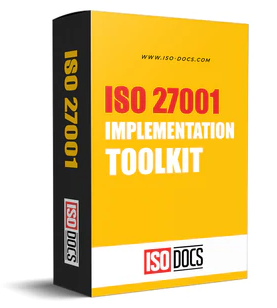Legal and Regulatory Conformity
Introduction
In the context of the digital world in which data theft, cybercrime and invasion of privacy are mainstream topics and the security implications of information leaks and privacy become a major concern, legal and regulatory compliance has become the cornerstone of an effective information security management. Organizations seeking ISO 27001 certification to become Information Security Management System (ISMS) leaders in the world are required to demonstrate their awareness and strict compliance with all laws and regulations related to information security as well as contractual standards. Such conformity is not just required to ensure legal survival, but is a competitive advantage, fostering trust with stakeholders and enabling long-term business performance.

Major Concepts And Principles
What Is Legal and Regulatory Conformance in ISO 27001?
Legal and regulatory compliance is an organizational capability to systematically and successfully identify, interpret, and comply with legal and other obligations related to information security that an organization has in law, statutory, regulations and contracts. The main parts of the ISO 27001 where this requirement is discussed include Clause 4.2 (the requirements of the interested parties), Clause 6.1.3 (the treatment of compliance risks), Clause 7.5 (documentation) and Annex A controls most of all A.5.31: Legal, statutory, regulatory and contractual requirements.
Legal and Regulatory Requirement: Scope of Requirement and Type
Local, National and International Laws: Data protection acts (such as GDPR, CCPA, HIPAA), cybersecurity statutes, computer misuse acts, etc.
Industry Compliance: Payments (PCI DSS), financial operations, healthcare practices, or other sector based rules.
Contractual Obligations: Non-disclosure agreements, customer/vendor obligations and partner compliances.
Rules on Privacy and Data Handling: Cross-border data transfer regulation, breach notification time limit and data retention requirements.
Themes of Compliance/Major Principles
Comprehensiveness: Find out not just the apparent legal and contractual requirements but all the applicable ones.
Demonstrability: Trace document compliance activities and have audit-ready evidence.
Proportionality: Calibrate responses based on the risk levels and impacts to the business.
Continual Improvement: Revise and modify your compliance practices on a regular basis in response to the evolving laws or changes in business.
The significance Of Compliance With Law And Regulation
1. Avoiding Legal Penalties and Paying Legal Fees
Failure to comply may attract hefty penalties, lawsuits and even closure of business. Data privacy laws, more so, are also ruthless as there are hefty fines that breaches entail, and this can be economically devastating to organizations.
2. How to Buddha: Protecting Brand Reputation
Even a slight compliance failure can decimate brand trust By convincing others that they are conforming, customers, partners and employees can be assured of information assets managed to the highest standard of vigilance.
3. Business Enabling Opportunities
Customers and business associates also require evidence of regulatory conformity before signing agreements or data-sharing consent. ISO 27001 compliance introduces new collaborators, markets and tenders.
4. Independently Managing Risk
Legal and regulatory risks are essential to the risk management process of the ISO 27001. Managing such risks safeguards not only compliance, but operational robustness and strategic durability.
5. Legal Inventory
Have a Permanent Record of Legal and Regulatory Concerns: Keep a list of all of the laws, regulations, and contracts that the organization is affected by during its operations. Keep this register up to date with the contributions of legal and compliance, as well as business functions.
6. Assign Accountability
Assign Compliance Owners: Assign ownership to monitor and manage each area of legal and regulatory compliance to responsible individuals or teams.
Benefits Of Legal And Regulatory Compliance In ISO 27001
1. Less Financial and Legal Risk
Compliance obviously reduces the risk of penalties, lawsuits, or disruption through enforcement actions.
2. Better Market Image
Companies that can reach or even surpass the standards set by regulators establish a trust-based and reliable relationship with partners, vendors, regulators, and consumers.
3. Streamlined Operations
Effective sound compliance programs relieve fire brigades and make it clear that priorities to concentrate on value-based projects rather than firefighting.
4. International Enterprise
Having established that it conforms to international recognised standards such as ISO 27001 and key data privacy set of regulations eases access into new environments and markets.
5. Ready to Change
A compliance and continuous improvement culture sets organizations in a good position to adapt quickly to any new laws or technology or market needs.
Typical Pitfalls And Avoiding Them
- Ignoring Indirect Obligations: Several times, second or third-tier requirements (such as, demands provided by crucial vendors or partners) are not observed.
- Approaching Compliance as a One-Time Solution: The legal environment evolves frequently; it is highly recommended to set the review frequency to prevent outdatedness.
- Ignoring Documentation: we can only say, we comply”. Keep in-depth records.
- Ignoring Cross-Border Requirements: Assuming that, when data or services are moved across national boundaries, local laws are adequate is a mistake; you need to investigate international and foreign jurisdiction criteria.
- Not training the staff: Compliance is the responsibility of everyone failure to provide proper training leads to unintentional breach and fines.
Conclusion
Legal and regulatory conformity is a non-negotiable pillar of ISO 27001 information security management. In a world that is fraught with cyber threats, perplexing regulations and stepping up customers, partners and governments, organizations have to not just learn the rules, but have them live by them, document their compliance and adapt to any change.


